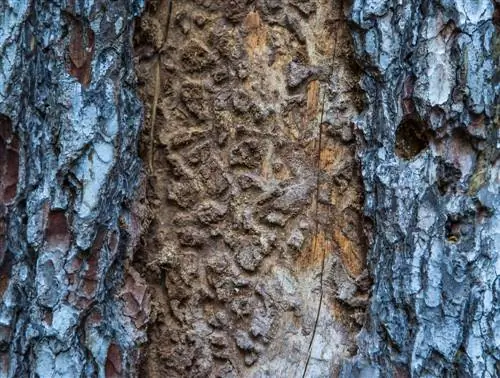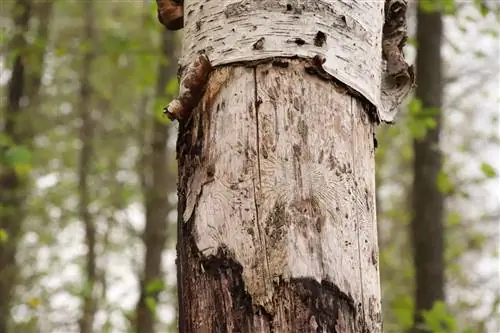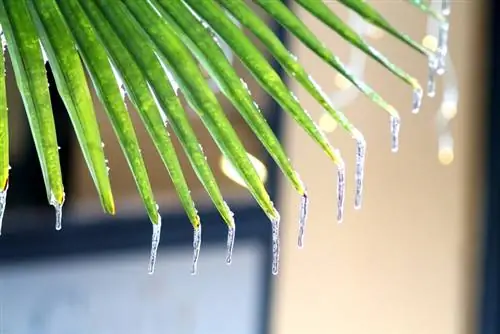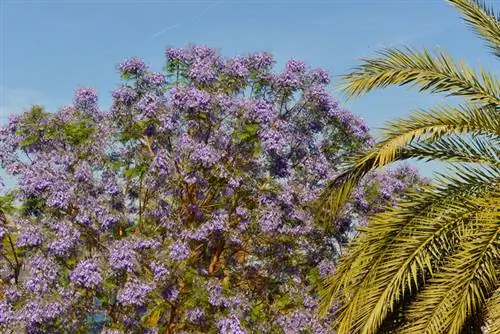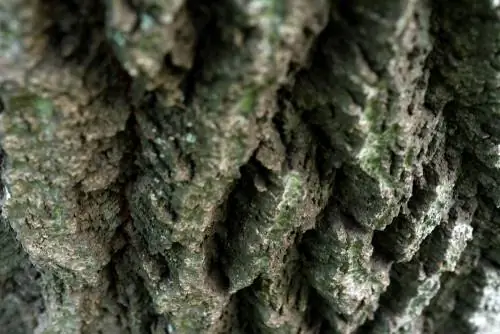- Author admin [email protected].
- Public 2023-12-16 16:46.
- Last modified 2025-01-23 11:21.
Pine trees are actually quite robust and can withstand all environmental influences. Bark beetles can still be very dangerous to conifers. Early detection is very important in this case. Here you can find out what signs indicate an infestation and how you can save your pine trees from the pest.

How do you recognize and combat bark beetles on pine trees?
A bark beetle infestation on pine trees can be recognized by brownish bore dust, resin formation, red needles, needle shedding and falling bark. To combat this, infected trees should be removed, the pine trees should be protected from drying out and bark injuries should be sealed. If you suspect, inform the responsible forestry office.
Different types of bark beetles
Pine trees are particularly susceptible to two types of bark beetles:
- the bark-breeding bark beetle
- and the wood-breeding bark beetle
Bark-breeding bark beetle
This pest lays its eggs under the bark of the pine tree. Its larvae later feed on the bast tissue, which serves as an important protective shield for the conifer. To a certain extent, the pine tree is able to repel the beetle by means of a dense layer of resin. However, the pest emits smells that attract other animals. Although weakened trees are primarily targeted, even he althy pines have no chance against a mass infestation.
Wood-breeding bark beetle
The wood-breeding bark beetle, on the other hand, penetrates directly into the trunk. The egg-laying female brings in a fungus that later serves as food for the larvae. Furthermore, it destroys the wood by building countless tunnels that have a black discoloration.
This makes your jaws vulnerable
External factors weaken your jaws, making it easy for the pest to penetrate the trunk:
- warm summers (permanent temperatures above 17°C
- Snowfall
- drought
- Storms (promote mass proliferation)
- Injuries to the bark
Symptoms
- there is an increased risk from mid-April
- brown drill dust at the foot of the trunk
- pronounced resin formation (can also indicate other diseases)
- red needles
- Needle drop
- Bark falling off
Combat
Only early detection can save your jaws from an infestation. Regular inspections of the bark are therefore very important. You must remove infected trees immediately to avoid mass reproduction. Also make sure that your pine tree does not dry out and seal any injuries to the bark. If there is an infestation, it is best to inform the responsible forestry office in your area.

